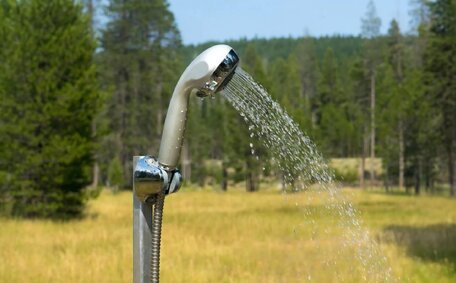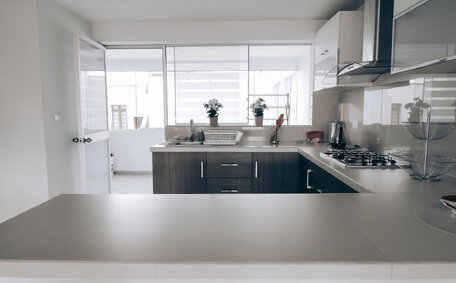Introduction to Gas Heaters and Indoor Safety Considerations
For indoor safety, exercise caution when operating unflued gas heaters to mitigate substantial risks.
According to industry standards in Australia, all heaters, including lpg heaters, must be installed and regularly serviced by a licensed gas fitter to ensure their safe use and optimal function. Unflued gas heaters warrant concern for their tendency to emit harmful gases like carbon monoxide into your home.
That’s why at As expert plumbing technicians, we stress the importance of servicing heaters every two years, considering that invisible and odourless gases such as carbon monoxide can be lethal.
As your trusted local plumbing professionals, we understand how to use your gas heaters to meet specific challenges and are dedicated to empowering Gladesville residents to incorporate safe heating solutions into your daily living.
In this article, we’ll cover everything from recognising warning signs of a malfunctioning heater to understanding the differences between flued and unflued options. We hope this guide,
Distinguishing Between Flued and Unflued Gas Heaters
The safety of flued versus unflued gas heaters varies significantly due to their distinct impacts on indoor carbon monoxide levels. Flued gas heaters are constructed as safe for indoor use, featuring a flue or exhaust system to channel combustion byproducts outside. This layout minimises the risk of carbon monoxide that could potentially harm your household, making them safer for indoor use.
What should I do if I use a gas heater, particularly an unflued model, in my home? It’s crucial to know that because they lack venting, byproducts of gas combustion can build up and be hazardous.
All gas heaters, especially flueless gas models, are linked to concerns such as childhood asthma, since they emit carbon monoxide, nitrogen dioxide, and carbon dioxide among other air pollutants during their operation. But unflued heaters release these directly into indoor air, while flued units vent them outdoors. This key difference means unflued heaters present an increased risk unless there is an enhanced flow of fresh air for ventilation to prevent dangerous gas accumulation.
Ensuring proper air flow is crucial, as both versions, counting unflued systems, need licensed attention to prevent gas build-up, which can contain dioxide carbon and pose grave health and fire dangers. Flued heaters should be serviced every 2 years to verify flue integrity and ensure levels of carbon monoxide can remain within safe limits. Unflued heaters may require more frequent servicing, and the room should have adequate ventilation.
In essence, ensuring gas heaters safe means meticulous installation, ongoing maintenance, strategic airflow management, and smart placement of carbon monoxide detectors. Our experts can advise on how to utilise your heater for safe use, which best suits your home while minimising monoxide CO exposure.
Ensuring Adequate Ventilation
Proper ventilation is critical for the use of a gas heater indoors. Both flued and unflued heaters can release harmful byproducts like carbon monoxide CO during combustion, making fresh airflow critical to prevent a buildup of these gases indoors, which poses a safety hazard.
Australian standards stipulate that areas with gas appliances, like unflued gas heaters, need a minimum of 200 cubic metres of fresh air per hour. This equates to roughly 10 total exchanges of indoor air per hour, crucial for replacing stale, cold air with fresh currents. Even flued heaters need proper ventilation to reduce indoor air pollution and preserve air quality.
Experiencing stuffiness, unshakeable odours, or darkened patches near the heater suggests insufficient airflow or a defective heater, especially critical while using the unit. Headaches, nausea and dizziness can also indicate dangerous gas buildup. If your heating appliance’s carbon monoxide detectors sound an alarm, take immediate safety precautions.
Ensure proper ventilation, with vents, fans, or open doors/windows, when using gas-burning appliances like gas cooking stoves or heaters indoors. Our technicians can inspect your setup and recommend solutions to meet air exchange rate requirements. When considering bringing outdoor gas solutions, such as patio heaters, inside, remember that prioritising ventilation is key to preventing carbon monoxide risks and protecting your family.
Regular Maintenance and Servicing
Regular servicing of your gas heater by a licensed gas fitter, at least once every two years, is vital for optimal performance and preventing hazards.
As expert plumbing technicians, A trusted local service provider, offers comprehensive servicing to heat your home warmly and secure it effectively. Our skilled technicians meticulously inspect and assess your unit’s condition, ensuring your heater is serviced correctly to warm up your home safely while addressing any underlying issues before they escalate into serious problems.
During a typical service appointment focused on gas heater safety, our experts:
- Inspect the heater for any visible damage or signs of wear
- Clean the heater components, removing dust and debris
- Check and adjust the gas pressure and burner operation
- Examine the flue for integrity and blockages
- Measure carbon monoxide levels to verify adequate ventilation
Contact As expert plumbing technicians today to schedule your gas heater service and enjoy a cosy, worry-free winter season.
Understanding Carbon Monoxide Risks
Carbon monoxide (CO), an invisible, odourless gas, is . When using gas heaters indoors, understanding the risks associated with carbon monoxide exposure is crucial for maintaining your health and your family’s safety.
Symptoms of CO poisoning, which can resemble those of the flu, include headaches, dizziness, weakness, nausea, confusion, and shortness of breath.
Prolonged exposure to carbon monoxide can cause more severe symptoms, loss of consciousness or even death.
To mitigate the risks of CO poisoning when your appliance begins to off gas, it is imperative to install and maintain a carbon monoxide alarm in your home, notably close to gas appliances. These devices alert you to disturbing levels of carbon, enabling you to take prompt action. For optimal protection, place CO alarms on every level of your home and within 1.5 metres of all sleeping areas.
How do unflued gas heaters affect my heating choices and safety? Australian standards recommend replacing CO detectors that are more than 10 years old to ensure they function optimally with these types of heaters. Additionally, test your detectors monthly and replace their batteries annually or as indicated by the manufacturer’s guidelines.
As a responsible homeowner, you should also be aware of the signs of a malfunctioning gas heater that could lead to increased CO levels. These signs include:
- A yellow, orange, or brown flame instead of a blue one can indicate gas isn’t burning correctly
- Stains or soot around the appliance
- Pilot lights that frequently blow out
- Excessive condensation on windows
If you notice any of these signs or suspect a CO leak, immediately turn off your gas heater, ventilate your home, and seek professional assistance from a licenced gas fitter like As expert plumbing technicians.
How to Recognize Signs of a Malfunctioning Heater
Operating a faulty appliance, particularly when you use propane heater, heightens serious health and safety risks. As your trusted As expert plumbing technicians experts, we urge you to be aware of the following warning signs that could indicate problems with your unit:
- Discoloured flames - The burner flames should always be blue. Yellow, orange or black flames are abnormal and indicate improper combustion.
- Unusual noises - Banging, hissing or odd rumbling sounds can signal issues with gas flow, ignition or ventilation.
- Pilot lights frequently blowing out - If the pilot light keeps going out, this likely points to a problem with the thermocouple sensor.
- Soot build-up - Black stains around the unit can mean incomplete fuel combustion producing excess carbon monoxide.
- Gas smells - Noticeable gas odours suggest potential gas line leaks.
If you observe any of these symptoms, take immediate precautions. Acting quickly helps avoid carbon monoxide poisoning risks and protect your household’s health. Never ignore warning signs or hesitate to contact licenced gas fitting professionals like As expert plumbing technicians.
Turn off the gas heater, learn how to use your ventilation effectively, open doors and windows, evacuate the area and call our team on 1300 349 338.
Best Practices for Safe Operation
To operate your gas heater indoors safely and reduce risks, follow these best practices:
- Ensure your heater is installed according to the manufacturer’s specifications and Australian standards by a licensed gas technician.
- Choose heaters specifically designed for indoor environments, equipped with essential safety features.
- Ensure there is sufficient ventilation in the room by keeping doors/windows open or using exhaust fans, particularly when operating gas heating systems.
- Keep all flammable materials at least one metre away from the heater.
- Inspect your heater before each use and check for any warning signs like unusual sounds or smells.
- Have your heater serviced biennially as advised to maintain safe and efficient operation.
- Install carbon monoxide detectors in your home and test them regularly.
- Avoid letting the heater operate unattended while you sleep or for extended periods, as this increases risks.
- If you have any doubts about your heater’s safe functionality, discontinue use immediately and contact a professional.
Following these simple guidelines for proper use and maintenance helps keep heaters safe and mitigate the risks associated with indoor gas heaters, ensuring your family stays comfortable and protected.
Alternative Indoor Heating Options
Alternative heating solutions include outdoor heaters for alfresco areas, which, with caution, can sometimes be adapted for indoor use. Examples include:
- Portable gas heaters are flexible and usually silent with no emissions, though they may lead to higher energy bills if safety guidelines are not followed.
- Reverse cycle air conditioners - With the cooling cycle reversed, this central system can also yield effectual heating. Ideal for consistent warmth throughout your abode.
- Hydronic central heating - This system uses a gas boiler and water-filled radiators to evenly heat an entire house. Costly to install but energy-wise in the long run.
Ultimately the right indoor heating solution for your situation depends on factors like installation costs, efficiency, safety considerations and personal heating preferences. Our experts at As expert plumbing technicians would be happy to provide safety tips and consult on the best option to keep your home warm.
Key Takeaways
Here are some key takeaways on safely using gas heaters indoors:
- Ensuring proper ventilation is fundamental to prevent carbon monoxide buildup; opening doors, windows, and using fans significantly improves air quality.
- Install carbon monoxide detectors near every gas appliance to ensure safety from harmful emissions. Check them monthly and replace batteries yearly.
- Have heaters serviced by licenced technicians every 2 years as per standards. This prevents issues.
- Stay vigilant for signs of malfunctioning, such as unusual noises or smells, which could indicate high levels carbon monoxide being emitted. Turn off heater and call professionals immediately if observed.
- Prioritise regular maintenance. This improves safety, efficiency and lifespan of your gas heater.
- Consider alternative heating options such as electric heaters or hydronic systems if you are concerned about the risks associated with gas heaters.
By adhering to safety guidelines, you can use gas heaters indoors without undue risk. However, remain cautious as improper use can lead to carbon monoxide poisoning and serious health hazards. Contact As expert plumbing technicians if you need assistance ensuring your system’s safe functionality.






